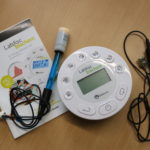Europäische Lernwerkstättentagung – Vernetzungs- und Arbeitstreffen der Lernwerkstätten in (Mittel)Europa › Foren › Austausch vorher, nachher … › Lab Centrifuge
- Dieses Thema ist leer.
-
AutorBeiträge
-
kindrasackett
Gast1. Introduction to Lab Centrifuges
1.1. Definition and Importance
A lab centrifuge is an essential piece of laboratory equipment that uses centrifugal force to separate components of a mixture based on their densities. The centrifuge works by spinning samples at high speeds, forcing heavier particles to settle at the bottom while lighter ones remain at the top. This process is crucial in various scientific disciplines, including biology, chemistry, and medicine. By enabling precise separation and analysis of components, centrifuges facilitate numerous experimental and diagnostic procedures.
1.2. Historical Development and Evolution
The concept of using centrifugal force for separation dates back to the 19th century. Early centrifuges were rudimentary and manually operated, limiting their efficiency and applicability. The advent of electric motors in the early 20th century revolutionized centrifuge design, leading to the development of more sophisticated and automated models. Over the decades, advancements in technology have further enhanced centrifuge performance, including improvements in speed control, rotor design, and temperature regulation. Today, modern lab centrifuges are indispensable tools in scientific research and diagnostics.
2. Types of Lab Centrifuges
2.1. Benchtop Centrifuges
Benchtop centrifuges are versatile and widely used in laboratories for routine sample processing. These compact devices can accommodate various rotor types, allowing them to handle different sample volumes and types. Benchtop centrifuges are ideal for general-purpose applications, such as cell culture, blood separation, and protein precipitation. Their user-friendly design and adaptability make them a staple in many research and clinical labs.
2.2. Microcentrifuges
Microcentrifuges are specialized for handling small volumes, typically ranging from 0.2 to 2.0 milliliters. These centrifuges are commonly used in molecular biology and genetic research for applications such as nucleic acid extraction, protein purification, and PCR preparation. The high-speed capabilities of microcentrifuges enable rapid and efficient separation of microscale samples. Their compact size and precise control features make them indispensable for high-throughput workflows in modern laboratories.
2.3. Ultracentrifuges
Ultracentrifuges are designed for high-speed and high-resolution separation of subcellular components, macromolecules, and nanoparticles. Capable of reaching speeds exceeding 100,000 revolutions per minute, ultracentrifuges generate immense centrifugal forces, facilitating the separation of particles with minute differences in density. These centrifuges are critical in biochemistry, virology, and nanotechnology research, where precise and efficient separation of complex mixtures is required. The sophisticated design of ultracentrifuges, including vacuum systems and temperature control, ensures optimal performance and sample integrity.
3. Applications and Benefits of Lab Centrifuges
3.1. Clinical and Diagnostic Applications
In clinical settings, lab centrifuges are indispensable for processing blood, urine, and other bodily fluids. They play a vital role in separating plasma or serum from blood cells, enabling various diagnostic tests such as blood chemistry analysis and hematology. Centrifuges are also used in preparing platelet-rich plasma (PRP) for therapeutic purposes. Their ability to deliver consistent and accurate results enhances the reliability of diagnostic procedures and patient care.
3.2. Research and Industrial Uses
Lab centrifuges are extensively used in scientific research for applications including cell and tissue culture, DNA/RNA extraction, and protein isolation. In industrial settings, they are employed in quality control processes, pharmaceutical development, and the production of biological products. The versatility and precision of lab centrifuges facilitate a wide range of experimental protocols, driving innovation and discovery in various scientific fields.
3.3. Advantages of Using Lab Centrifuges
The use of lab centrifuges offers several advantages, including enhanced separation efficiency, time savings, and improved sample integrity. The precise control over centrifugal force and speed allows for tailored separation protocols, ensuring optimal results. Automated centrifuges reduce the need for manual intervention, minimizing the risk of human error and contamination. Additionally, modern centrifuges are equipped with safety features and digital interfaces, providing user-friendly operation and data management. -
AutorBeiträge



